As the school year come to a close, we at talkSTEM are eagerly looking forward to everything that the summer has to offer! Summer is a great time to explore, and we are excited to present our summer 2023 STEMlens Challenge, open to any and all high school students looking to expand their involvement with STEM in an approachable and convenient way over summer vacation:
How to submit:
- Take a photo of something in your surroundings that you find interesting and caption it with a Math or a STEM question that is observation-based (see examples below). Post it on your social media account, as a post or on your story.
- Tag us @talkingstem and add the hashtag #HSSTEMlens
- DM us on Instagram with your photo and question, and we’ll count the entry!
- We will have a new challenge every month! If you post once in that month, you’re a Mathfinder beginner! Two posts, and you’re an Intermediate Mathfinder. Post four times in that month, and you’re a Visionary Mathfinder. And post 6 times, and you reach the level of EXPERT Mathfinder! Those who have reached the expert level by the end of the month will get a shoutout on social!


We had three of our talkSTEM interns – Mary, Mario, and Raine – test the challenge themselves throughout the spring semester and share their thoughts, along with other insights they had about how to find room for STEM while prepping for college and enjoying high school. Meet them and read their perspectives below!
First off, introduce yourselves!
Mary: I am currently SMU senior double majoring in Mathematics and Education and will continue my education as an SMU graduate student upon graduation. I aspire to become a high school math teacher in the years to follow and be able to inspire young minds. Besides studying math, I love to read classic Spanish literature. I find the writing style and symbolism interesting; besides reading, I enjoy watching Disney and Pixar movies with my friends, in a sense they are like a reminder that we should help others if we can; everybody deserves a little kindness.
Mario: I’m a freshman Wildlife Biology major at Texas State University, and enjoy learning about all different types of wildlife. I also work in removing invasive plant species from the San Marcos River, allowing me to spend a lot of time in nature. When I have free time I like to listen to music, cook, and hang out with friends.
Raine: I’m a junior in high school interested in both STEM and the visual arts. Outside of academics, I enjoy cooking, creating art, and cuddling with my cat.
The walkSTEM Explorers Challenge involves documenting encounters in your daily lives, and ask questions about the STEM aspects involved in them. Of the videos or photos you took as part of this program, which two or three were your favorite?
Mary: My favorite videos/photos were the moving statue, the big head and the chapel on the SMU campus. All three of my selected math stops are my favorite because they are pieces of art that people pass by everyday. However, regardless of being admired for being interesting, nobody thinks about that there are math concepts in their admiration. Once in high school, I learned that our eyes determine beauty based on symmetry, and that is one of the things that came to mind for me once I admired these pieces.
Mario: For me it was the musk turtle and the crawfish I encountered in the river. They stand out to me because they’re sort of like nature’s wonders. You don’t really know they exist unless you take a minute to go out in nature and look for them.
Raine: Upstart II by Clement Meadmore and Structural Constellation (K-8) by Josef Albers – both artworks I saw in museums. Both incorporate subtle aspects of mathematics, providing perfect examples of mathematics through the lens of art.
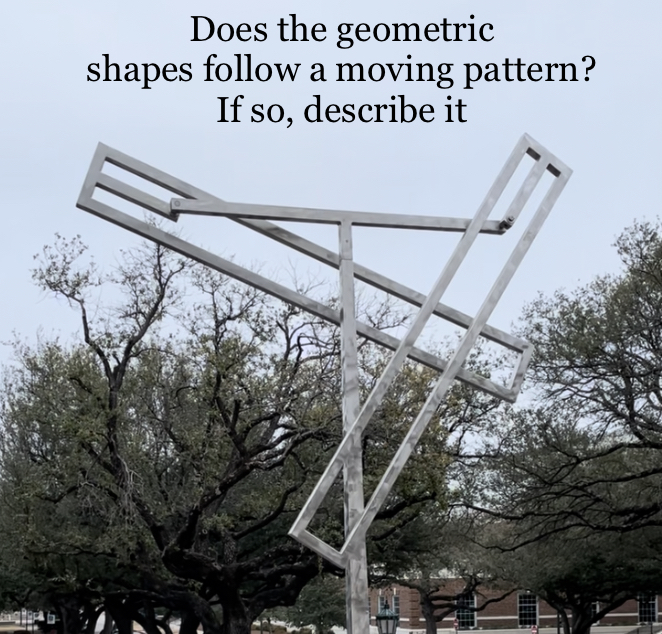

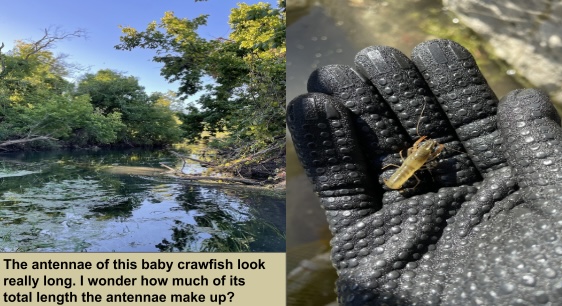

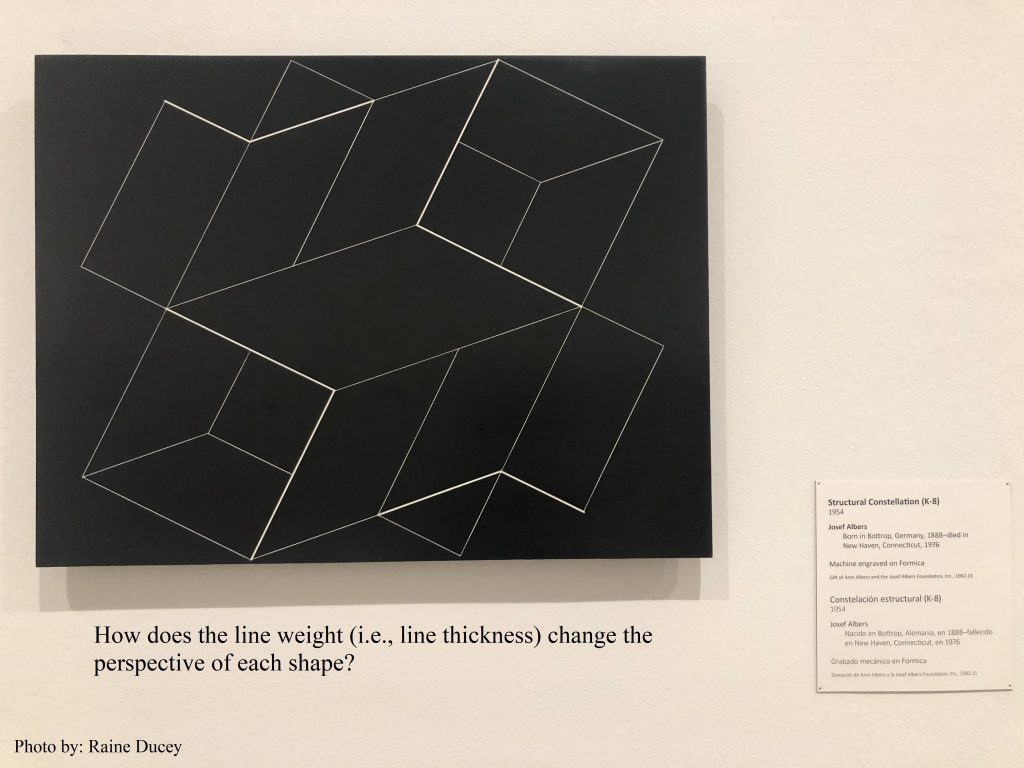

How did your process in generating those STEMlens photos and questions change or evolve over the course of your time with us? For example, did it feel easier or harder as it went on? Did it take less time, or feel more natural? Did your interests or interest levels shift along the way?
Mary: At the beginning, generating questions was a little challenging, as I needed to open my mind to the beauty of the art piece or the object first. However, after practice and exploring past math walk stops developed through the walkSTEM and MathFinder initiatives, it became less challenging for me to generate question for pieces.
Mario: It felt easier the more questions I made. I would notice things, take a picture, come up with a few ideas, and later put more time into creating a question.
Raine: As I continued generating STEMlens content, I found that formulating questions became much easier – this made the entire process of taking photos and creating questions take less time. Moreover, I found that my interest in the subtle connections between STEM and the visual arts grew along the way.
If you were to recommend this program to another student, what would be your advice to them? What would you like them to know going in that you would have found helpful?
Mary: This a great and wonderful opportunity for anybody! You get to open your mind in ways you didn’t know you could. As a future math educator, this helps me find ways for my students to explore math in the real world. If somebody plans to taking this opportunity, they should try exploring and experience previous math stops. By doing so, they will know what type of questions they should try considering and developing.
Mario: Don’t be intimidated by math. Sometimes it may seem hard or too complicated, but it doesn’t have to be.
Raine: This program is a truly insightful experience that reveals the ubiquity of STEM in everyday life.
For additional STEMlens examples, visit this page. Happy posting!


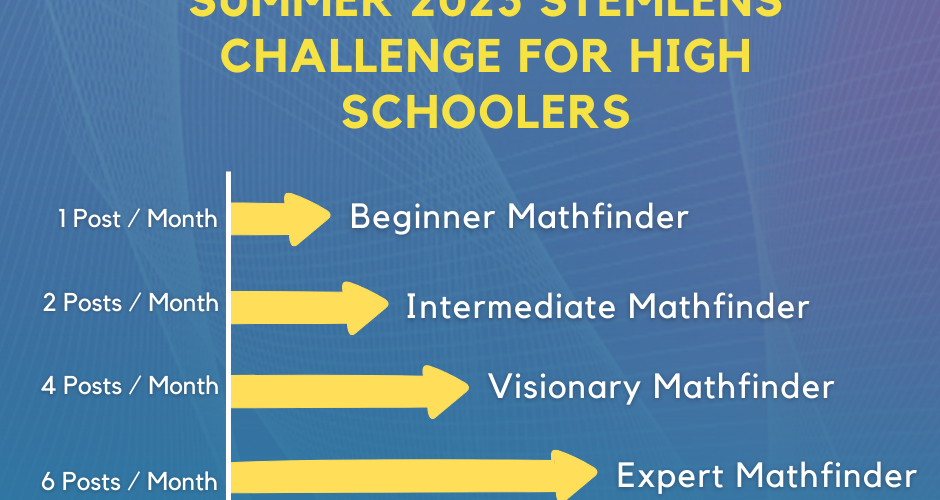
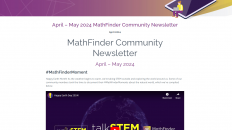



Add comment